As we pulled into the historic town of Natchez, Mississippi, we immediately felt like we had stepped back in time. With its grand antebellum mansions, charming streets lined with oak trees, and views of the mighty Mississippi River, Natchez holds a unique blend of history and Southern charm that’s hard to find anywhere else.
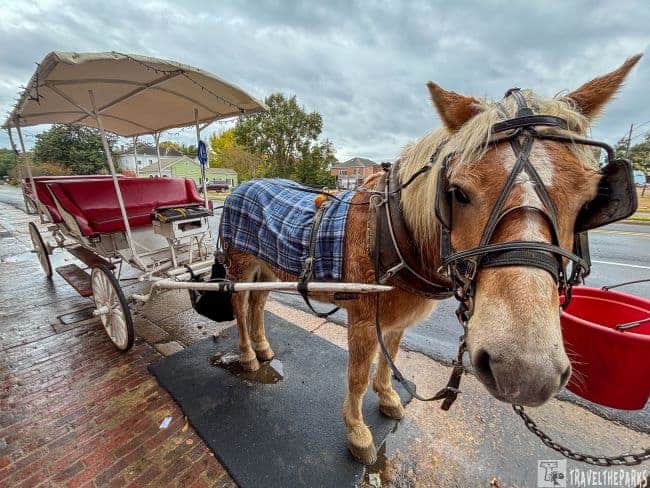
On our southern road tip adventure. exploring the history of the civil war, there was no way I was not including a stop in Vicksburg National Military Park or Natchez National Historic Site as part of our itinerary. Eager to explore Natchez’s storied past, we devoted a full day to engage ourselves in the town’s captivating history and timeless charm. Established in the 18th century, Natchez boasts a profound cultural legacy, shaped by its antebellum roots, Native American heritage, and pivotal location along the mighty Mississippi River.
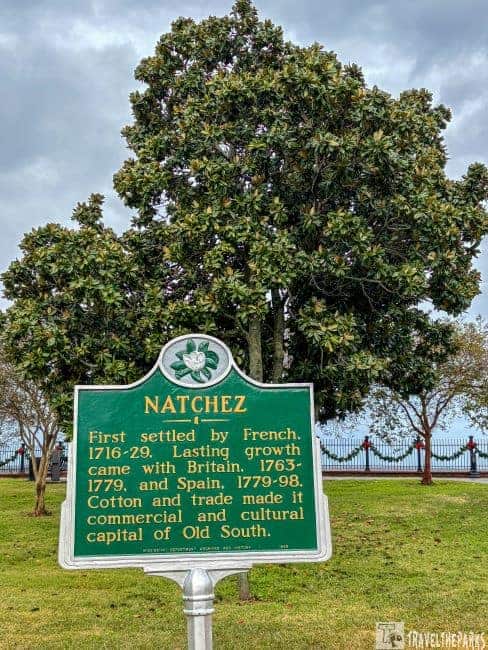
This post may contain affiliate links, meaning if you purchase something through one of these links, we may earn a small commission at no extra cost to you! Read the full disclosure policy here.
Table of Contents
How to Get to Natchez, Mississippi
You can reach Natchez Mississippi, a lovely historic city by the Mississippi River by driving or flying. Here’s a summary of the best ways to get to Natchez:
1. By Car Natchez is accessible by car, and the road system makes it easy to get there from various parts of Mississippi, Louisiana, and beyond.
- From Jackson, Mississippi: Drive about 90 miles south on US-61 S. The drive takes roughly 1.5 to 2 hours, depending on traffic.
- From New Orleans, Louisiana: Drive about 170 miles north on I-10 W to I-49 N toward Alexandria, then take US-84 W to Natchez. The drive takes around 3.5 to 4 hours.
- From Baton Rouge, Louisiana: Take I-110 N toward US-61 N and drive about 140 miles to Natchez. The trip usually takes 2.5 to 3 hours.
2. By Air: While Natchez doesn’t have a major airport, you can fly into nearby cities and drive to Natchez.
- Louis Armstrong New Orleans International Airport (MSY): The closest major airport to Natchez is in New Orleans, Louisiana. It’s about 170 miles away from Natchez (around a 3.5 to 4-hour drive).
- Jackson-Evers International Airport (JAN): Another nearby option is Jackson, Mississippi’s airport, about 90 miles away from Natchez, which takes about 1.5 to 2 hours by car.
- Vicksburg-Tallulah Regional Airport (VKS): For a smaller regional airport, you could fly into Vicksburg-Tallulah Regional Airport, about 50 miles from Natchez. This option may require connecting flights from major hubs.
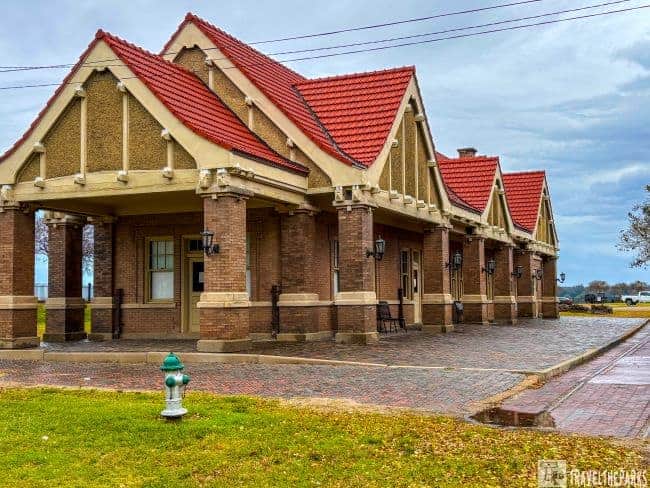
Natchez Depot Visitor Center: Gateway to Southern Charm and History
We started our day at the Natchez Visitor Center, which occupies a beautifully preserved historic railroad depot. There, we picked up a self guided walking tour map and learned a bit about the town’s rich history. The incredibly helpful staff provided valuable insights to make the most of our day in Natchez. Armed with maps and excellent recommendations, we set out to explore the area.
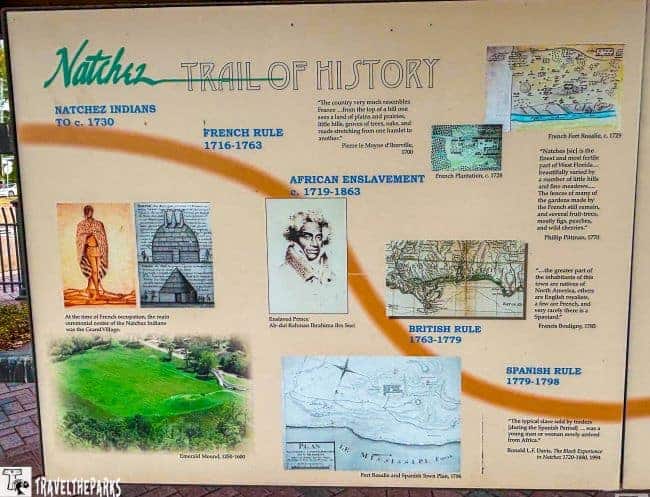
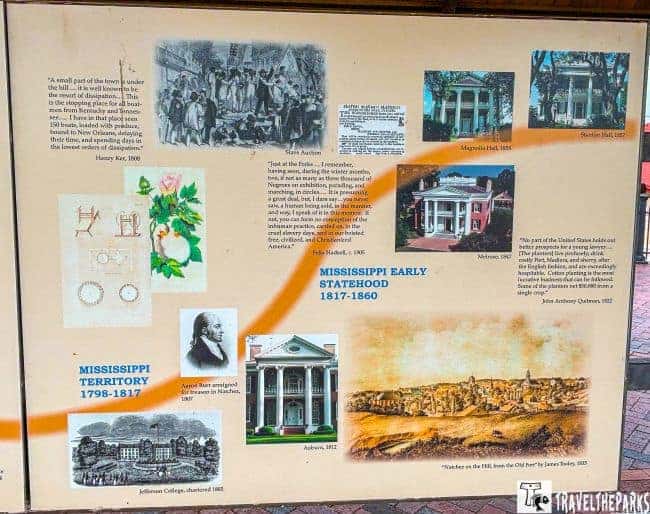
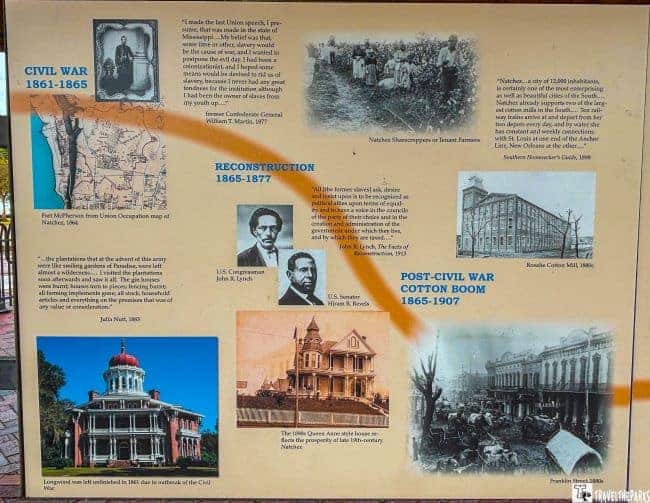

Just outside the Natchez Train Depot, you’ll find an interpretive display that offers a fascinating timeline of the city’s rich and diverse history. This outdoor exhibit serves as a great introduction to Natchez, highlighting key moments in the city’s development from its early days to the present.

The Natchez Bluff Trail: A Must-See Walking Path in Natchez
A short walk from the Depot Visitor Center, the Natchez Bluff, offered us a beautiful view of the Mississippi River flowing beneath. We enjoyed one of the best views in town as we watched the riverboats go by. One cannot help but think about how much the river affected the history of Natchez. It served as an important trading center and was also a place where battles took place during the Civil War.

The Bluff Park Walking Trail features historical markers that provide information about Natchez’s rich history. The trail is a short 0.6 mile peaceful walk, accessible for all. On this rainy Sunday, the park was empty. We could see that the day before had been Natchez’s annual Christmas celebration. The decorations made Bluff Park especially festive.

One stop is the Bridge of Sighs connecting the old part of town to the riverside. Named after the Bridge of Sighs in Venice, this Bridge of Sighs is part of the Natchez Bluff Trail. It is a well-known spot for taking pictures, providing beautiful views of the Mississippi River. Visitors frequently pause here to admire the skillful iron work. The bridge is a symbol of the city’s lively history and its link to the river. “It’s a place you really shouldn’t overlook when you go to Natchez.”
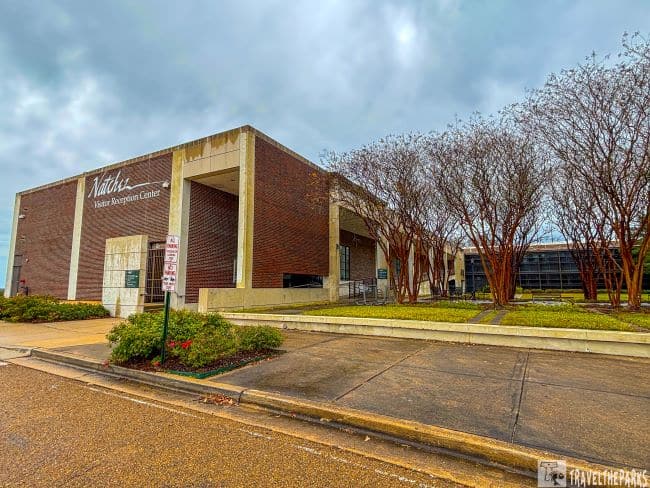
Start Your Journey at the Natchez National Historical Park Visitor Center
After watching a brief introductory film and chatting with the friendly staff at the visitor center, we picked up a map that guided us to the key stops within the park. With our plan set, we were ready to begin our journey. Natchez National Historical Park is an interesting collection of sites. Each offering distinctive insights into Natchez’s antebellum past, African American experience, and colonial history. We spent ample time discovering each of the locations: Melrose Mansion, Forks of the Road, Fort Rosalie and the William Johnson House all situated in various parts of Natchez and its surrounding areas.

Fort Rosalie: The Birthplace of Natchez
Our tour began at Fort Rosalie, the location of the inaugural European settlement in Natchez. The French built the fort in 1716 on high ground overlooking the Mississippi River. Even though nothing of the original fort survives today, the site offers a fascinating look into the area’s early colonial history. The site is open from sunrise to sunset.

We also discovered that the Natchez Indians lived in the area long before Europeans came. On November 28, 1729, things really intensified between the French and the indigenous Natchez, leading to a big clash. The Natchez chief “the Great Sun” started a revolt against the French settlers. This rebellion happened because people were really upset about land issues, especially because of what Sieur de Chépart, a colonial leader, was doing to grab land for a tobacco farm. The fight led to about 229 to 285 people losing their lives. The violent fight was an important event in colonial history and showed how tense the relationship was between the two groups.
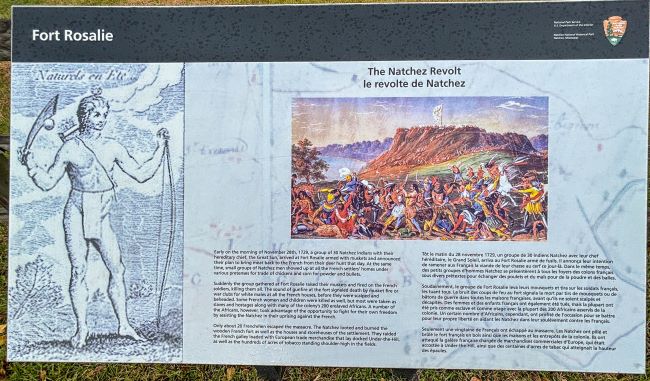
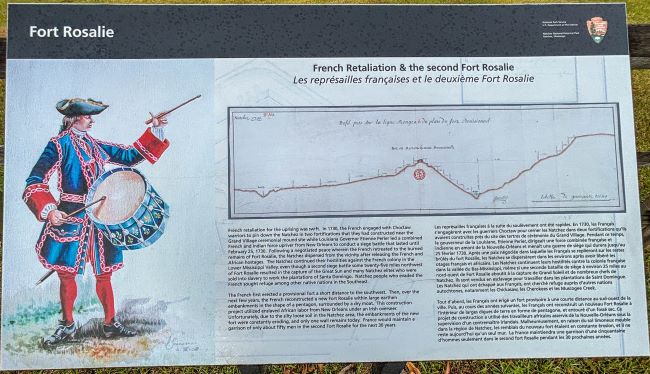


While walking through the grounds, we could discern the location of the former fort. Informative signs placed throughout the area enriched our understanding of the fort’s significant role in trade. There were, however, conflicts during its existence. As the French endeavored to assert control over the Mississippi River territory amid rising tensions with both Native Americans and the British. The history of the fort reminds us of the complicated connections between the early settlers and the Native American clans. This legacy helps us understand and appreciate Natchez’s heritage more deeply.

Visit the William Johnson House: A Natchez Historic Landmark
We began our journey at the William Johnson House, which is only a few blocks away from the Visitor Center. William Johnson, often called the “Barber of Natchez ” was a free Black man who ran a successful barbershop. He owned several pieces of property in and around Natchez during the 1800s. His house is now a museum that gives a unique look at the life of a free Black man during the time before the Civil War.
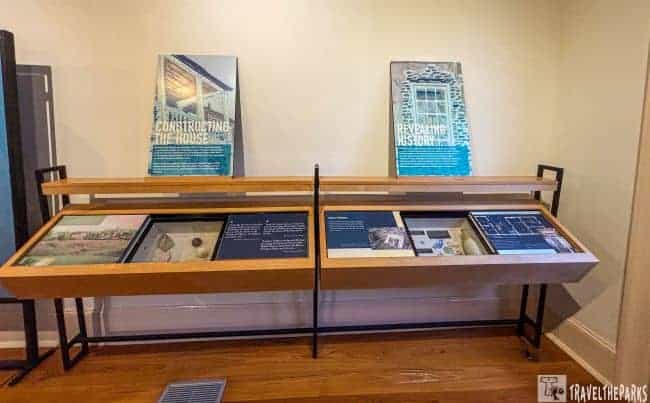
The first floor of the museum invites visitors to experience the life of a remarkable free Black man in the antebellum South. Johnson, though free, faced a complicated social world. Artifacts on display show his relationships with both the white elite and the enslaved community. Other exhibits highlight his role as a successful entrepreneur and a key figure in Natchez society. The museum captures Johnson’s unique struggle and achievements in a challenging time.

Strolling through the second floor of the house, we discovered authentic period furniture from the decorating the rooms. What amazed me most was reading about Johnson’s life through his detailed journals. These journals recorded his personal experiences with business activities and the relationships between different races and social classes in Natchez. The tour was really interesting, giving us a sense of how Johnson and his family lived.
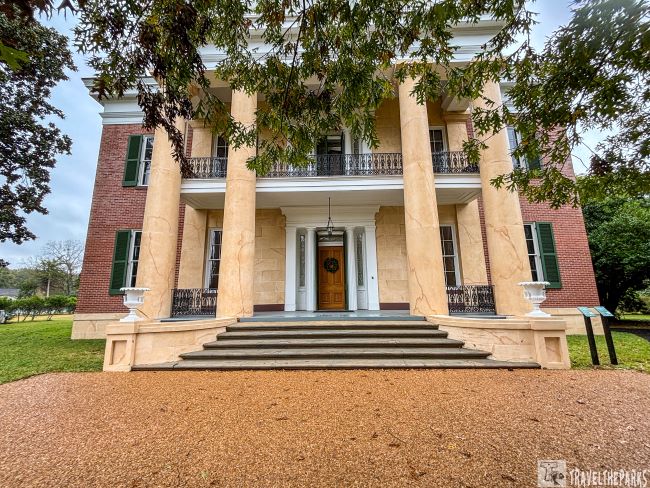
Discover the Melrose Estate: Natchez’s Historic Southern Mansion
Next, we visited the Melrose Estate of the Natchez National Historical Park. John Hankins, a wealthy Natchez merchant and cotton planter, built Melrose in the 1840s. The Greek Revival style of the mansion reflects the affluence of the flourishing cotton economy of the Mississippi River Valley. It was later owned by several prominent families. The mansion’s well-preserved state reflects the opulence of the antebellum South.
Note: The Melrose is open every day from 8:30 AM to 5 PM except Thanksgiving Day, Christmas Day, and New Year’s Day. You can join a guided tour of the mansion at 9:00 AM, 10:00 AM, 11:00 AM, 2:00 PM, 3:00 PM, and 4:00 PM. Just a heads up, you’ll need to make reservations for the house tour on Recreation.gov.
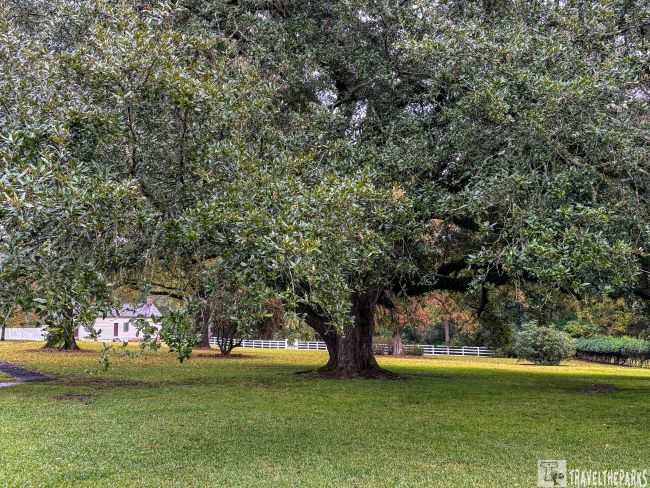
The mansion offers guided tours (30-minutes), during which we learned about its history, architecture, and the owners. The mansion revealed a number of beautiful 19th-century pieces of furniture, paintings, and artifacts. Besides this, the Christmas decorations were a real bonus. This tour guide gave quite detailed information about the house and its first owners. However, the most touching part was hearing about the enslaved people who lived and worked on the property. The Melrose Estate underlines fully the complicated and often problematic history of the South: the contrast between the grand estate mansion and the enslaved people working in it couldn’t be sharper.
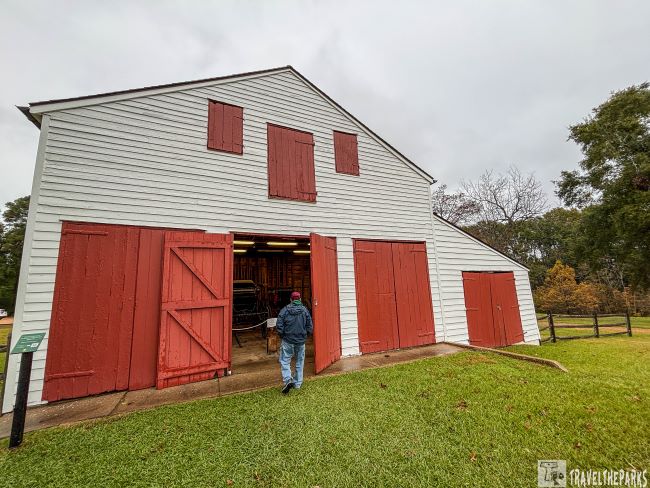
Melrose Mansion grounds are open to the public (free). You can do a self-guided walking tour and take your time appreciating the natural beauty of the area. I downloaded the audio treks via the NPS App prior to our visit. Each of the numbered stops had a corresponding audio track. The 80-acre estate includes the principal mansion, a visitor center in the kitchen, a dairy, cistern houses, a smokehouse, a privy, a carriage house, a barn, and the only surviving slave quarters in Natchez. It took us an hour to finish the entire grounds.
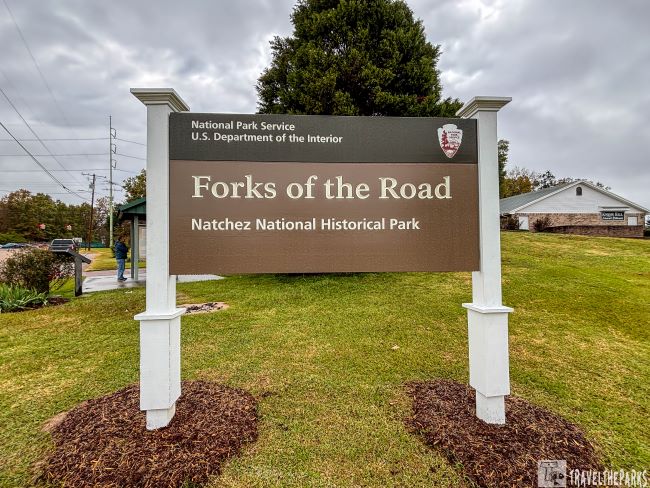
The Forks of the Road Slave Market: Confronting a Painful Past
The Forks of the Road is a historic site; so-named for the intersection of two important roads. This was how travelers knew in which direction to travel to either the Texas frontier or New Orleans. Between 1800 and 1860, it was among the largest domestic slave markets in the United States. Slave traders sold about 2,000 enslaved people annually at the Y-intersection of D’Evereaux, Liberty Road, and Catherine Street. It became, over the course of more than sixty years, a focal point for the forced migration and trade of enslaved people. The scale of suffering and loss experienced at this site is hard to comprehend.
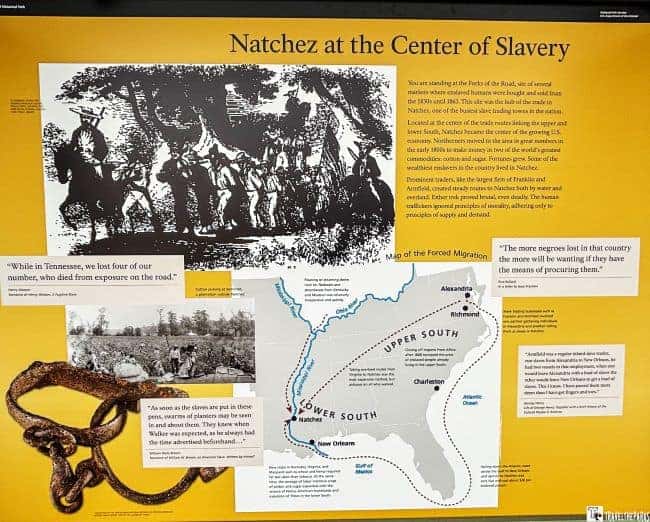

When we visited the site, its simplicity immediately struck us. Today, the location consists of a small, well-kept park with interpretive signs that explain the history of the site. There are no grand monuments or structures here, just open land with historical markers that help to paint a picture of what life was like during the market’s operation.
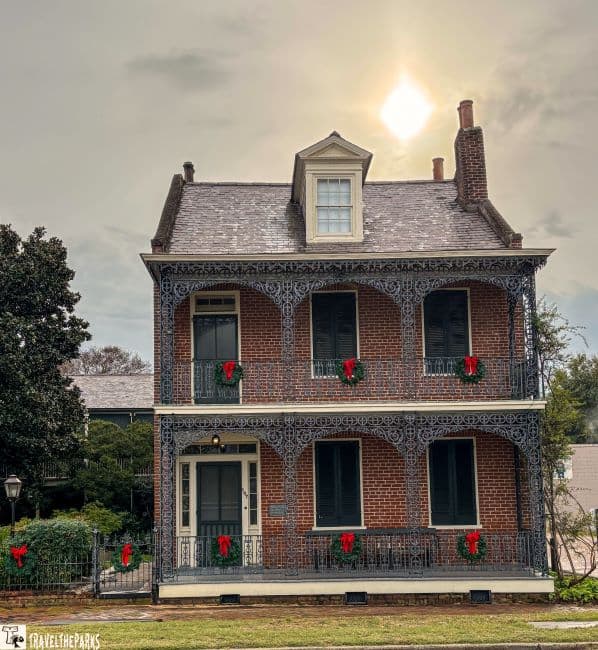
Explore Historic Natchez on a Downtown Walking Tour
For conventional tours, the Hop-On Hop-Off guided open tour bus is a solid choice. It lets you see key sights at your own pace. You can hop off to explore an attraction and then hop back on when you’re ready. Buses come frequently, so you won’t be waiting long. This option is great for visitors wanting flexibility and a guided experience. You’ll get helpful commentary as you travel, enhancing your understanding of the area. It’s a simple way to enjoy the city without feeling rushed.

Opting for the walking tour, we followed the Blue Natchez Trails markers. The markers point the way to tour stops with arrows. For us, this self-guided walk was a great way to experience the depth of Natchez’s history. Walking along the tree-lined streets of downtown Natchez, it is difficult not to appreciate its stunning architecture. The first thing that struck us was-it’s not overrun by tourists, so we could really take our time while enjoying the charm of a beautiful Southern town.

1. Texada: A Quiet Hidden Gem in Natchez
We accidentally discovered the history of Texada on our walking tour. It is the first brick building in Natchez, marking a major shift in local architecture. This change from wood to brick signified wealth and stability. Brick construction offered durability that wooden structures couldn’t match. The building symbolized progress and a new standard for future developments in the area. Texada’s establishment reflects the community’s growing tastes in design. It played a key role in defining the architectural landscape of Natchez.
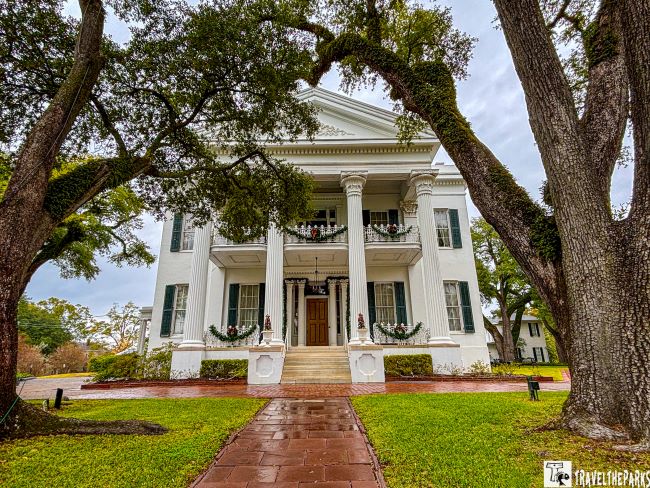
2. Discover The Charm of Stanton Hall (circa 1857)
Our subsequent stop was one of Natchez’s most renowned antebellum residences – the magnificent Greek Revival Stanton Hall, constructed in the 1850s. Standing out front, we admired its striking columns and meticulously maintained grounds. For me, it was easy to envision the lavish gatherings that likely occurred during the town’s antebellum period. While the mansion welcomes visitors for tours, simply strolling around its exterior left us in awe.
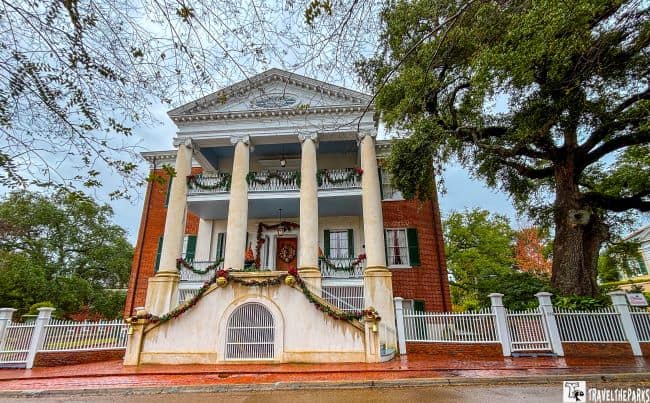
A short distance away, we came across several additional historic homes, each possessing its own intriguing narrative. Natchez is rich in these remarkable pre-civil war structures. I dedicated time to capturing the breathtaking architecture through photography. It was then time to begin delving into the histories of the families who once called them home.
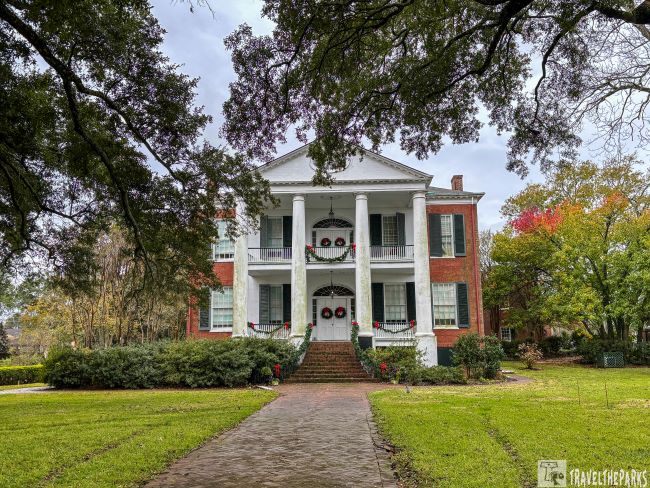
3. Pilgrimage Garden Club Mansions: Southern Elegance Preserved
Continuing our walking tour, we explored several mansions open for the annual event hosted by the Pilgrimage Garden Club. The Pilgrimage Garden Club features a selection of Natchez’s most iconic mansions. Time was tight, so we couldn’t see all the homes, but we admired the elegance of Rosalie (1823) and the Burn (1832). Tasteful Christmas decorations adorned both houses. Each tour takes about 45-minutes and is offered year-round.
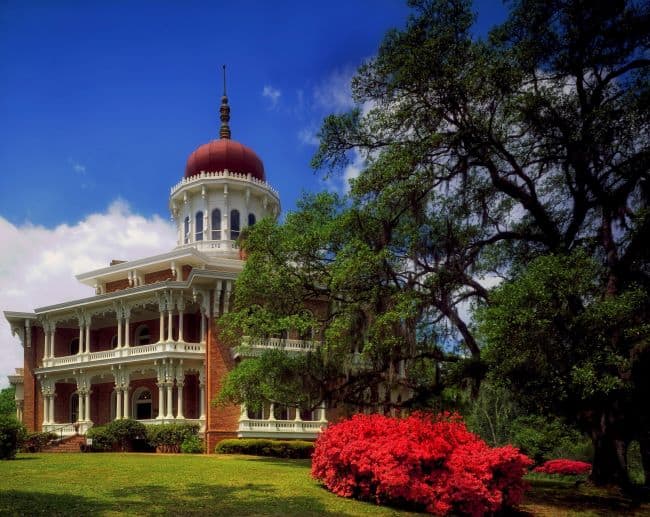
I wish we had more time in our schedule, as Longwood (Circa 1860-1861) stands out with its octagonal shape. Sometimes called Nutt’s Folly, the Civil War prevented the completion of the house, giving it a unique, haunting atmosphere. Its blend of Northern and Southern architectural styles adds to its charm. It is important to mention that the fee at the gate just to drive by the mansion is exorbitant; you are better off doing the full tour.
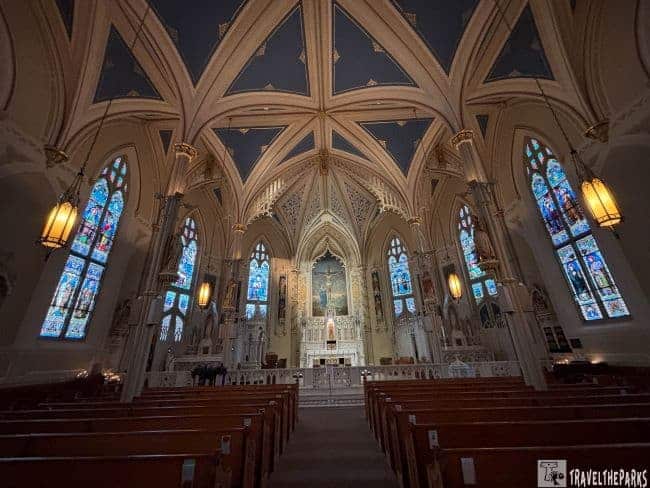
4. Discover the Beauty of Saint Mary Basilica in Natchez
The Saint Mary Basilica in Natchez is indeed a must-see landmark on a city tour. This is a stunning church known for its unique architecture and vibrant stained glass. Situated in the heart of Natchez, Saint Mary Basilica is an imposing structure along High Street, quite accessible to visitors touring the historic district. The architecture of Saint Mary Basilica is truly remarkable. As good as the Gothic Revival style, popular in the middle of the 19th century, this church shines brightly with stunning stained glass, fantastic woodwork, and an ornamented interior; its splendor is beheld with eyes wide open in admiration. It’s somewhere you’ll feel peace amidst being there for a service or admiring its beautification. It is definitely a place that will leave a lasting impression, besides being a highlight when it comes to visiting this city.
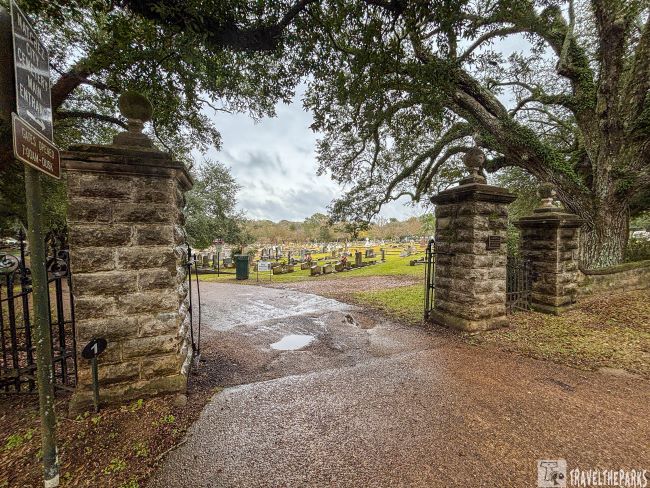
The Natchez City Cemetery: Stories Etched in Stone
The Natchez City Cemetery is only a few blocks’ walk from downtown. The cemetery, which was founded in 1822, reflects Natchez’s history, from various periods of grave stones to people from every background and all walks of life. In fact, it’s one of the oldest cemeteries in the South. We’d read about it before coming, but had no idea how moving it would be to walk among the graves. Of all of the interesting features of the Natchez City Cemetery, surely one of the most amazing ranges of tombstones, mausoleums, and towering monuments is a wonder to consider from a multi-sectional view over several centuries. Intricate carvings made most of the headstones phenomenal examples of craftsmanship, while others were large, imposing obelisks and statues. Most monuments evidenced the wealth and importance of many of Natchez’s former residents.

There is a deep sense of history here. Many of the individuals buried here played key roles in developing the town-from plantation owners to civil rights leaders. It was a quiet, reflective stop. One monument in particular, the Turning Angel, is a striking, life-sized marble statue of a winged angel in motion. The sculptor sculpted it so that it appears to turn or pivot. A large pedestal supports the statue. People often describe the statue as “lifelike” because of its expressive features and flowing robes.
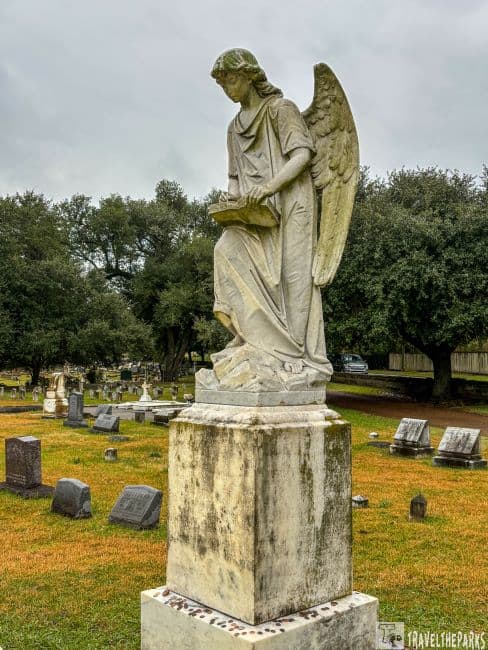
Echoes of Tragedy: The Natchez Drug Company Explosion and the Turning Angel
On March 14, 1908, a gas explosion ravaged the Natchez Drug Company, killing five females, all young and one as young as 12 years. The explosion in the building caved it in, leaving an indentation in the dirt of downtown Natchez. Only their last names label their graves—the last remnants of their brief lives. The company, overcome with grief because of the tragedy, provided for burial plots and ordered the Turning Angel to watch over them-an added poignancy to their memory. We spent quite some time walking around the winding paths, taking in the beautiful old oak trees draped in Spanish moss.
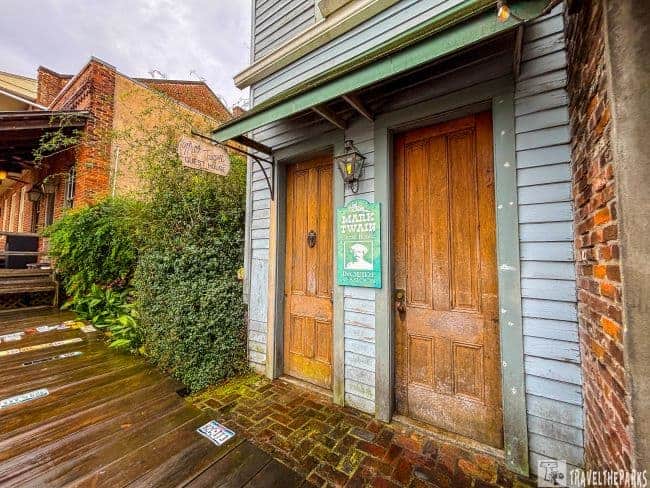
Natchez Under-the-Hill: Live Music and Riverfront Charm
As we journeyed through Natchez, one thing that kept coming to our minds was Mark Twain’s classic characters, particularly Huckleberry Finn. By late-afternoon, we found ourselves at Under the Hill, the perfect spot to watch the riverboat traffic. The area known as “Under the Hill” was once a thriving port during the 19th century, crucial to the cotton trade.t. For us, one of the most fascinating aspects of visiting the Under the Hill was learning about the history of the “Under the Hill” district itself. Famous for its riverfront activity and rowdy bars, saloons, and gambling halls. It was, in many ways, the wild side of Natchez, where steamboat crews, travelers, and locals mingled in a lively but often lawless atmosphere.

The Natchez Mississippi Bridge
The mighty Mississippi River has long been the lifeblood of Natchez. From Under-the-Hill, there are spectacular views of the Natchez Mississippi River Bridge. The construction of the bridge in the mid-20th century replaced an older, more rudimentary crossing, however, its location preserves its historical significance. Undeniably, Huck Finn’s star, and Natchez’s riverfront is a stunning backdrop against the adventures Twain describes with such great detail. Standing near the river’s edge, we could marvel at the size and power of the water, much as Huck would have done in his time. The river’s flowing waters, sprawling vistas, seemed to be endless before us, just as it had been in Huck’s day. I think the most magical part of our day in Natchez was watching a Mississippi River sunset.
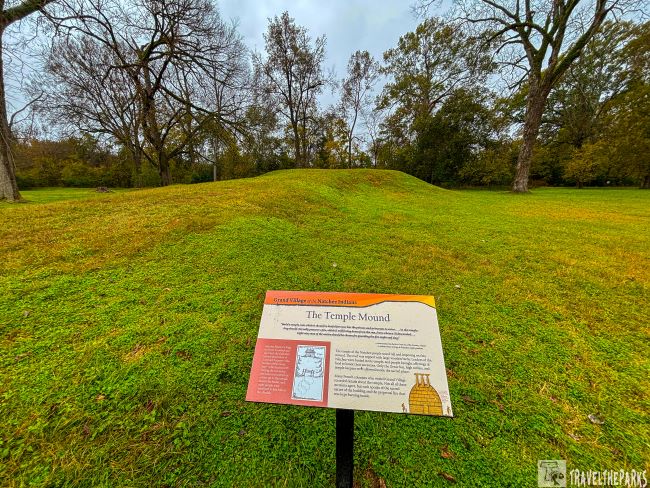
Travel Back to 1730: Grand Village of the Natchez Indians
Just outside of downtown Natchez (Hwy 61), we stopped at the Grand Village of the Natchez Indians, a National Historic Landmark. A primary center, the 128-acre site features three ceremonial mounds and one large plaza. Particularly famous for their elaborate ceremonies, powerful society, and complex interaction with European settlers, the Natchez people structure their lives around agriculture and trade.
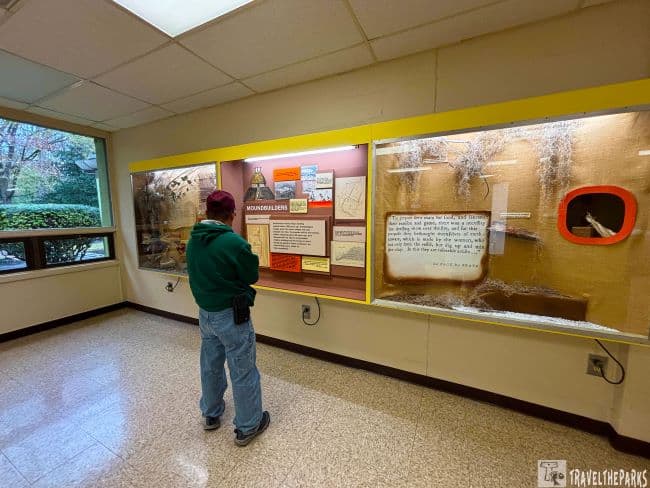
They were highly ritualistic in nature and had a remarkable division in society. This site was more of a cultural and ceremonial center. Today, this is a very important archaeological site. The visitor center is open daily Mon – Sat: 9:00 am-5:00 pm and Sun: 1:30 pm-5:00 pm. This center includes displays of artifacts, a museum with educational materials, and information on the Natchez people’s way of life, religion, and history. The docent was so helpful during our visit, sharing insight into the history of the center.

Exploring the Local Flavor: Dining and Shopping
After a full day of seeing things around Natchez, we were sure ready to taste some of the local food. For dinner, we stopped at this quaint restaurant called The Magnolia Grill. We had the best-ever shrimp and grits there. It was truly southern hospitality that made us feel right at home.
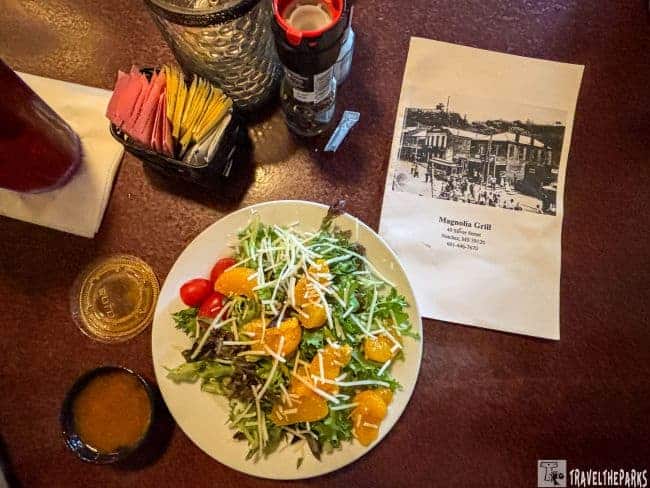
We shared dinner with a local couple who informed us about the town and its very interesting history; they recommended some spots hardly anyone goes to, which we will include in our next visit.

Before heading back, we went through the quaint antique shops and boutiques that lined the streets. This assemblage of shops offered a lot of handmade jewelry, vintage goods, and other unique souvenirs. We left with a hand-painted sign and some locally made jam in memory.

Final Thoughts: A Perfect Blend of History and Charm
While Natchez is celebrated for its lovely antebellum mansions and attractive riverfront, Forks of the Road Slave Market and similar places present a valuable counterpoint to the town’s history. It is a reminder that at the back of these immense mansions and cotton fields stood a system built upon human exploitation, and any visitor must also take into consideration this part of the story.

Natchez has a strong history that it shares with other famous Southern cities like Savannah and St. Augustine. Each has a unique mix of cultural influences, interesting buildings and a beautiful riverfront. Similar to Savannah, Natchez keeps its historical charm from before the Civil War, but it feels more like a cozy small town. St. Augustine’s Spanish colonial influence is well known, but Natchez’s distinct character stems from its French and Native American heritage. Each of these towns has a rich history, but Natchez stands out because it sits by the big Mississippi River. This makes it a rare yet lesser-known treasure among them.
For us, the melding of history, Southern charm, and hospitable people created an experience worth noting on our road trip. If you are ever taking a road trip through the South, take the time to visit Natchez-it’s a step back in time, but one that feels wonderfully alive with Southern warmth and charm.
Have you been to Natchez? What did you like best about the town? Share your thoughts in the comments below.




